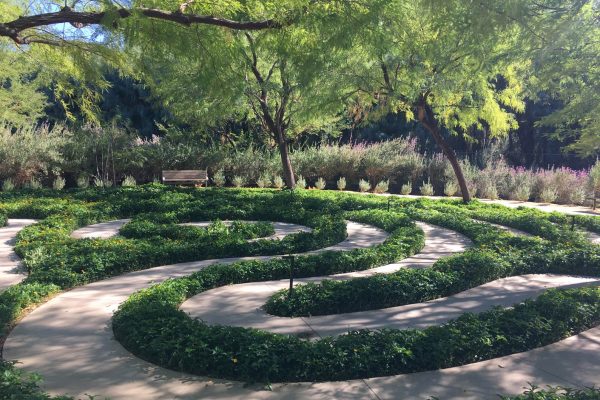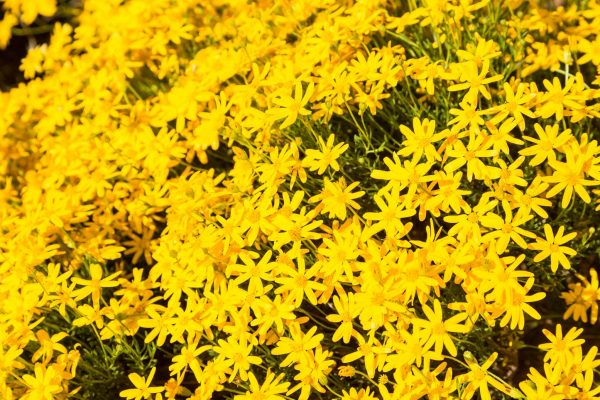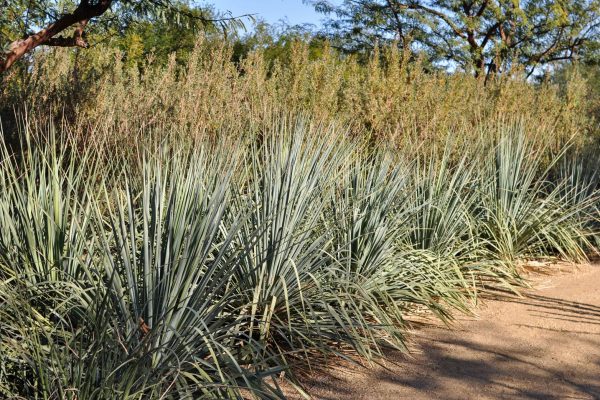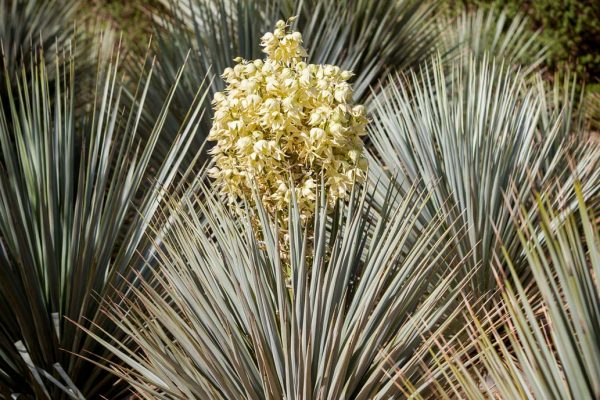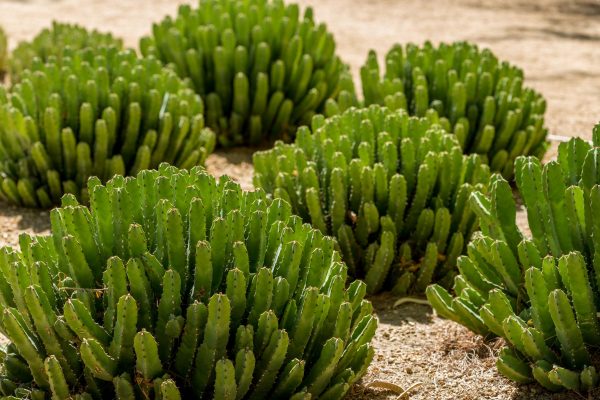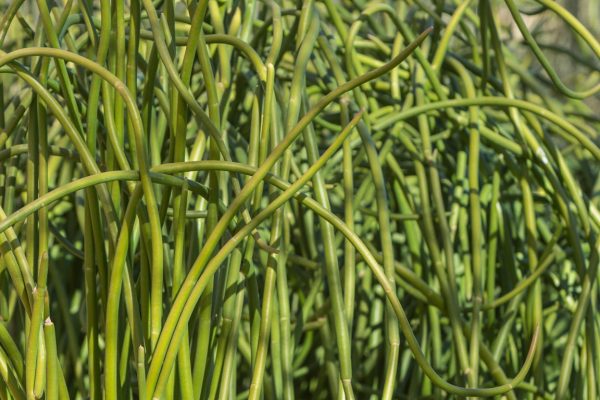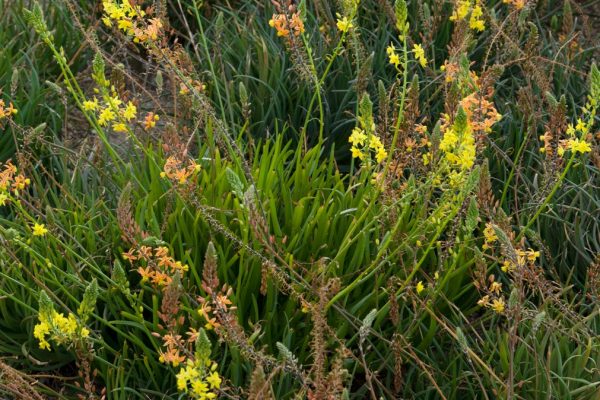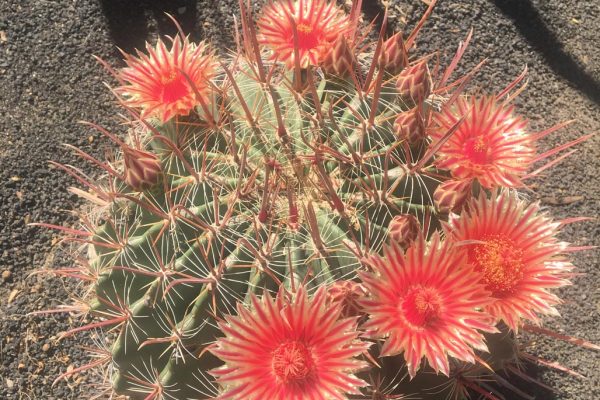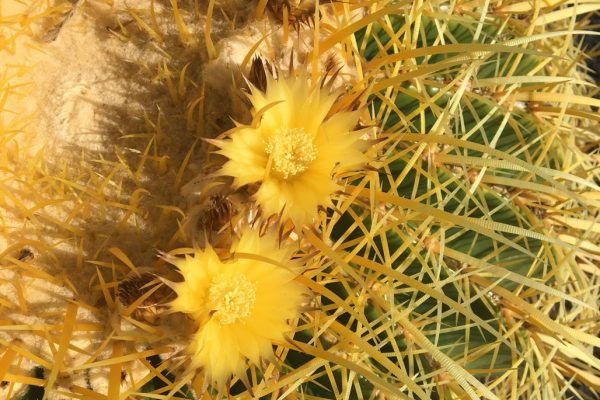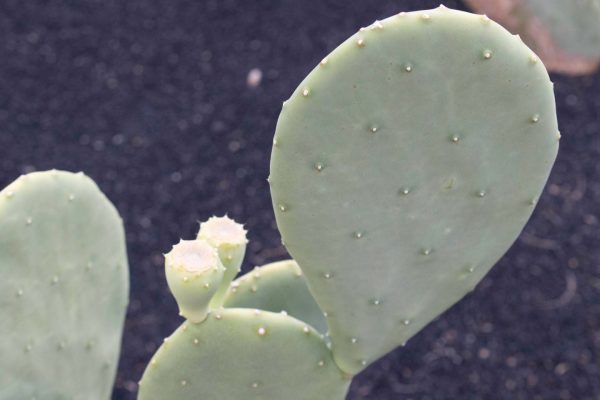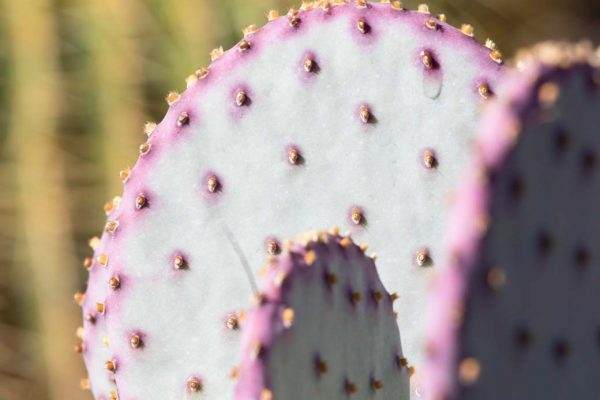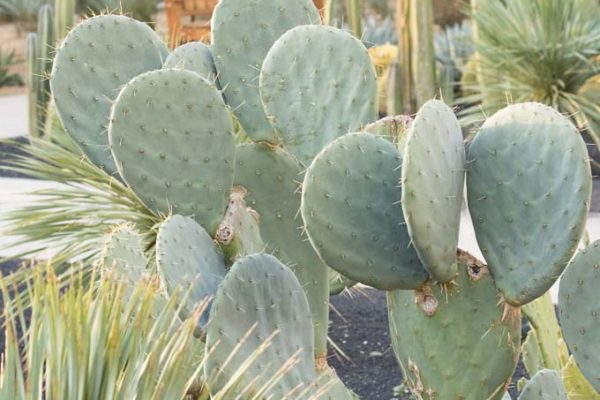One of the most asked about plants in the gardens is the Lady Slipper, which is best described as a cluster of giant green beans growing directly out of the ground. This plant grows upright for about a foot or two and then drapes over or twists around into a truly sculptural display. This perennial succulent can be grown in the ground or in pots as a focal point, but it also does well as a backdrop to smaller plants. It is extremely versatile with one exception. It cannot be grown in locations that freeze, unless it can be brought inside during the cold months.
In summer, bracts (modified leaves) appear at some tips of the plant. They display a red triangular bloom, which looks like a tiny red slipper. The fun of this plant is that it can be propagated by seed and by cuttings, so collecting one stem can result in additional plants.
Lady Slipper is a native of the Mexican states of Baja California and Sonora.
Euphorbia vs. Cactus
Euphorbias may be referred to as an “Old World” plant compared to those that are Cactaceae (cactus), which are referred to as a “New World” plant. “Old World” refers to plants with origins in Africa, Asia, and Europe. The “New World” refers to North, Central, and South America. While possibly meaningful for the purpose of biogeographic classifications, it is problematic because it places a colonial lens on the origin of species.
The origin of these terms according to the World Atlas:
‘‘Amerigo Vespucci, a Florentine explorer, coined the term New World (Mundus Novus). He quoted the term in a letter he had written to his friend Lorienzo di Pier in the spring of 1503. In his letter, he asserted that the lands discovered by European navigators were not the edges of Asia as Christopher Columbus stated. Instead, they belonged to an entirely distinct continent, the “New World.” Another explorer, the Italian born Peter Martyr, supported the context of the New World. He used the term ‘Orbe Novo’ translated as ‘New Globe’ upon discovering the Americas in 1511.”
Euphorbias are indeed found in the Americas. Some Euphorbias at Sunnylands are native species to the Americas, so those looking for native species in the gardens can include this species on that list.
A better way to distinguish Euphorbia, which can sometimes look similar to a cactus, is by the white, milky latex that is in Euphorbia. Cactus will have a clear sap. This latex does have a toxicity level and may cause skin rashes if handled.
Formerly called Pedilanthus macrocarpus.
